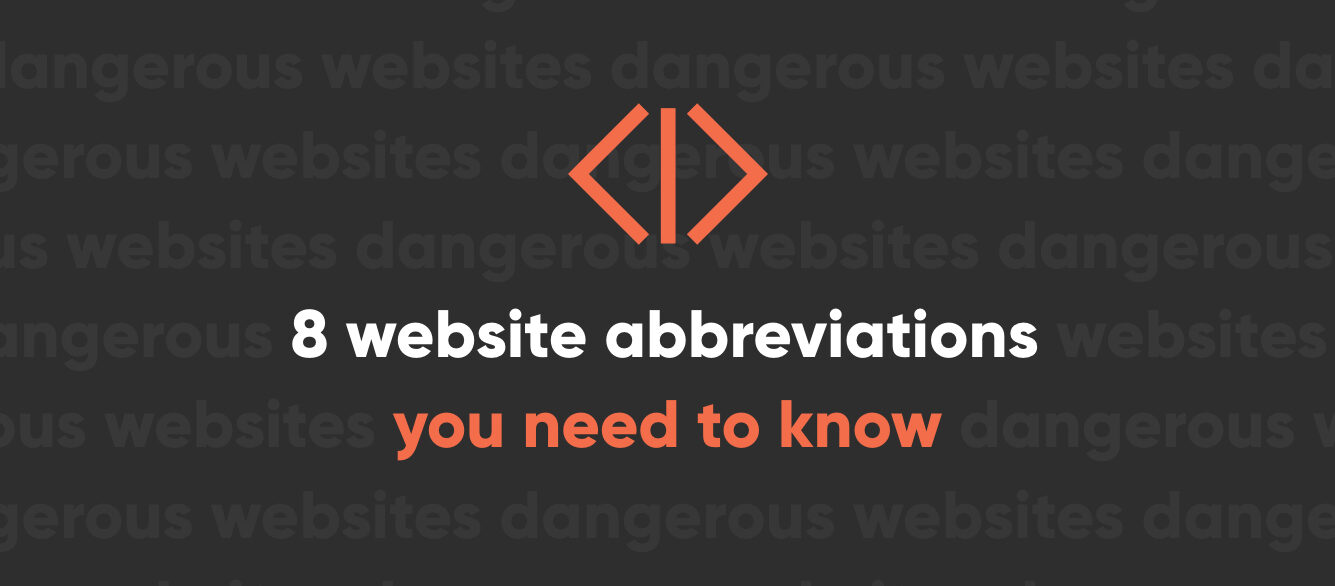
Unpacking 8 Website Abbreviations Every Website Owner Needs to Know

The world wide web (www) is an endless cosmos with an in-depth language all its own. In order to be successful in this cosmos, it’s important to have a firm grasp of the language and many of its key terms that are used on a constant basis. You have to talk the talk before you can walk the walk. Here is a breakdown of a few commonly used terms to make sure you know when operating your business online.
CTA
CTA stands for call to action and refers to an element on a webpage or marketing piece that aims to elicit a response or encourage a sale from the user/reader. Translation: they tell your audience to DO SOMETHING NOW! CTAs should be prominent and immediate, making it clearly obvious what a visitor to your site is supposed to do before leaving the page. “Call now” or “visit our store today” are common examples, as are limited time offers prompting the user to complete a purchase before a specific deadline. "Shop our plungers" or "2-for-1 hamsters through July 4th" are more industry-specific examples but are still plausible. The key to an effective CTA is to provide a compelling reason for the user to act promptly. Banners, buttons, or something else clickable are all common CTA formats that can send users down the conversion funnel.
A/B Testing
A/B testing refers to a randomized experiment with two variants – A and B. Okay, so it’s not really an abbreviation, but it’s got capital letters and is an oft-used phrase that many people don’t fully understand. The goal of A/B testing is to compare the effect of two different versions of something – often a webpage or CTA – by testing user responses to both versions. For example, if your contact form asks for first name, last name, middle name, nickname, phone number, address, email, alternate email, and favorite mammal, you might want to test a lighter version that just asks for name and email address. The winner of the test is the one that leads to more conversions, i.e. more contact form completions. In the case of the aforementioned test, that’s probably going to be the shorter form, but industries vary, so sometimes you have to test even in the face of best practice. Varying elements like copy, layout, images, and colors are all common forms of A/B testing. Every A/B test should include a problem you’re trying to solve (e.g. increase clicks on an element) and a hypothesis (e.g. if we make this button a different color that stands out more, then more people might click on it).
CRO
CRO stands for conversion rate optimization, which refers to modifying your site in hopes of increasing the percentage of your visitors that ultimately convert. Conversions typically refer to the main things you want your customers to do on your website: purchases, new leads (contact form submissions, phone calls, emails), newsletter signups, or document downloads. They’re pretty synonymous with KPIs (you know, key performance indicators). However, a conversion can vary widely based on your specific goals. CRO allows sites to generate more leads and sales without investing extra time and money into driving more web traffic. For example, you might improve the checkout process, create more obvious CTAs, shorten your contact form, update your copy, redesign your navigation, update your images, or perform any number of other tasks in order to create more conversions.
PPC
PPC stands for pay per click, an aptly named online advertising method through which you pay every time your digital ad is clicked. This is often associated with search engine results (namely, Google), wherein you can bid on keyword phrases relevant to your target market to help your site appear higher in search results (people often incorrectly refer to this practice as "buying keywords"). This just in: the higher you rank, the better. PPC doesn’t just happen in search engines. Many content sites allow ad placements with a fixed price per click. Social networks like Facebook also utilize PPC advertising, meaning you only pay when someone clicks on your ad and not when Aunt Rita scrolls quickly through her feed in a mission to like as many cat memes as possible. But if you’re good at targeting, Aunt Rita isn’t going to see your ad anyway.
SEO
SEO stands for search engine optimization and refers to the practice of impacting the visibility of your site or webpage in unpaid search engine results. Although many have declared SEO to be dead over the past decade, it’s still alive and kicking and helping many businesses to stay in business. SEO is complex and can’t be tackled effectively in a single paragraph, but we’ll leave you with this: content is king, backlinks are still important, and there’s a technical side to it that most developers don’t even understand.
CMS
CMS stands for content management system, which is a platform that allows you to create, edit, and manage the content that appears on the front end of your website. WordPress and Magento are two of the most popular CMSs in the world, with WordPress powering almost half the web. A CMS offers a collaborative environment and simplifies the content compilation and overall sitebuilding process, allowing you to edit your site without the help of a professional developer (in most cases, although we wouldn’t recommend a CMS that doesn’t give you this flexibility).
HTML & CSS
HTML stands for Hypertext Markup Language and is the standard coding language for creating websites, through which the site’s structure is described semantically and translated visually into what we see online. CSS stands for Cascading Style Sheets and is another language that works hand-in-hand with HTML to define the look and layout of the website’s content. CSS is designed to enable the separation of presentation and content when building or modifying a site.
These are just a few of the seemingly countless terms to make sure you know in order to achieve success for your business online, and this language only continues to grow as the web does the same. At Perrill, we specialize in helping business websites reach their full potential through full-service digital solutions. Contact us today to start existing online the right way.





